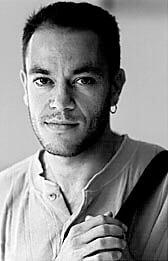A native of Brazil, André Cypriano was born in 1964 and educated in São Paulo with a university degree in business administration. Concerned with environmental issues, he contributed time and effort as the administrator of "Salva Mar" Save the Sea - a Brazilian organization dedicated to save the whales in North Brazil.
In 1990, one year after relocating to the U.S., André began to study photography in San Francisco. He has since completed several projects which have been exhibited in several galleries and museums in Brazil and the USA.
André has been a recipient of the first place award in San Francisco City College's Photography Department of Scholarship (July 1992), first runner-up in the World Image Award Competition promoted by Photo District News in N.Y. (Dec. 1992), first place in New Works Awards - promoted by En Foco in N.Y. (July 1998), as well as first place in the Mother Jones International Fund for Documentary Photography (Oct. 1998). As part of a long term project, Cypriano began to document traditional lifestyles and practices of lesser known societies in remote corners of the world with a slant toward the unique and unusual. Thus far, he has photographed the people of Nias, an island off the northwest coast of Sumatra (Nias: Jumping Stones), the dogs of Bali (Spiritual Quest), the infamous penitentiary of Candido Mendes, in Rio de Janeiro (The Devil's Caldron), as well as the largest shanty town in Latin America, Rio de Janeiro (Rocinha - An Orphan Town). His ongoing projects have been used in educational workshops.
Currently, André Cypriano works as a free-lance photographer in New York and continues to be involved in social and cultural activities.
